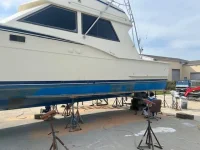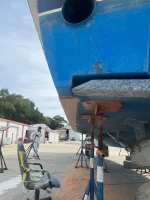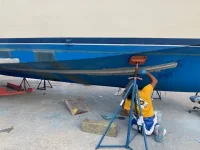Sonic Boom
Active member
- Joined
- Feb 20, 2017
- Messages
- 97
- Status
- OWNER - I own a Hatteras Yacht
- Hatteras Model
- 46' CONVERTIBLE-Series II (1981 - 1984)
After exhausting the internet on what a shortened keel, lift rails and lift strakes would do on a series 2 46HP without finding the answer, we took the boat to Wanchese, NC and let the professionals have at it. Sharing the results in case anyone else gets a notion or curious about doing the same. The baseline numbers were 1750-1800 rpm was 20 knots where we cruised most of the time. On the pins was usually in the 27 knots range at 2100 RPM which we never run at. In full disclosure, these engines were detuned to 2300 RPM no load speed in leu of the normal 2500 RPM no load speed.
Yesterday we finally splashed her and noticed a 2 knot increase almost across the board. 1750-1800 was about 22-23 knots and on the pins was 30 knots. However, the real gain was the boat runs more level now without the nose high attitude and the rooster tail behind the boat is almost gone. The engine temps dropped at least a needle width, lower EGT and less noise. She will even cruise in the 1500-1600 RPM range at 17 knots now easing along. Wide open RPM increase 150 to 2250 and 2260 RPM due to unloading the engines.
View attachment 76879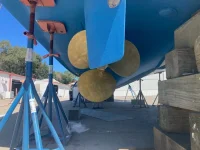
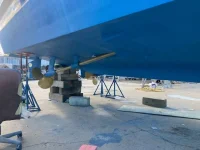 View attachment 76879
View attachment 76879

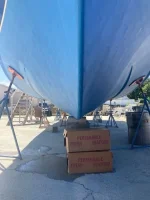
Hope this helps someone else looking for the same info.
Yesterday we finally splashed her and noticed a 2 knot increase almost across the board. 1750-1800 was about 22-23 knots and on the pins was 30 knots. However, the real gain was the boat runs more level now without the nose high attitude and the rooster tail behind the boat is almost gone. The engine temps dropped at least a needle width, lower EGT and less noise. She will even cruise in the 1500-1600 RPM range at 17 knots now easing along. Wide open RPM increase 150 to 2250 and 2260 RPM due to unloading the engines.
View attachment 76879

 View attachment 76879
View attachment 76879


Hope this helps someone else looking for the same info.

